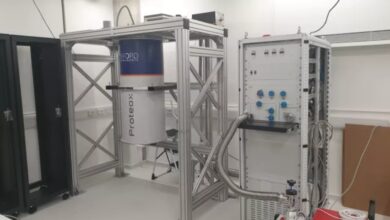BepiColombo Unveils Mercury’s Secrets: Stunning Mid-Infrared Images Reveal Planet’s Fiery Surface

European Space Agency (ESA) and Japan Aerospace Exploration Agency (JAXA) – In a remarkable milestone for planetary exploration, the BepiColombo mission has captured groundbreaking images of Mercury’s surface in mid-infrared light during its fifth flyby of the planet. These observations offer unprecedented insights into the composition and thermal properties of the Solar System’s smallest and hottest rocky planet.
The joint ESA-JAXA spacecraft, launched in 2018, is currently performing a series of flybys to fine-tune its trajectory before settling into Mercury’s orbit in 2025. The latest flyby, which occurred on December 14, brought BepiColombo within 300 kilometers (186 miles) of the planet’s surface, enabling it to gather crucial infrared data previously unseen with such precision.
Why Mid-Infrared Matters
This flyby marked the first time Mercury’s surface was observed in detail using mid-infrared light, a wavelength range invisible to the human eye but vital for detecting heat signatures and surface compositions. Scientists use this data to study the planet’s minerals, temperature variations, and geological processes, which are key to understanding Mercury’s history and formation.
“Observing Mercury in mid-infrared light gives us a clearer picture of the planet’s surface temperature and its composition,” said Dr. Elena Serrano, an ESA planetary scientist. “These wavelengths are particularly sensitive to heat and can reveal subtle differences between rocks, helping us map Mercury’s geological diversity.”
Discoveries and First Impressions
Preliminary analysis of the data suggests thermal variations across Mercury’s surface that may correspond to different rock types, impact craters, and ancient volcanic plains. The mid-infrared imaging also highlights Mercury’s extreme temperature contrasts, with sunlit regions reaching over 430°C (800°F) while shadowed areas plunge to -170°C (-274°F).
The observations shed new light on craters like the Caloris Basin, one of the largest impact structures in the Solar System. By detecting how heat radiates from the surface, scientists can infer the composition of the basin floor and its surrounding ejecta, providing clues to Mercury’s violent past.
“The level of detail we are seeing is incredible,” said Dr. Hiroshi Tanaka, JAXA mission scientist. “We are uncovering Mercury’s geological fingerprints, which are key to understanding not only its evolution but also the formation of rocky planets in general.”
The BepiColombo Mission
BepiColombo consists of two spacecraft: ESA’s Mercury Planetary Orbiter (MPO) and JAXA’s Mercury Magnetospheric Orbiter (MMO). Together, the orbiters will study Mercury’s surface, magnetic field, atmosphere, and interior structure after arriving in its final orbit.
The mission’s multi-flyby strategy, including six encounters with Mercury, is necessary to counter the Sun’s immense gravitational pull and gradually slow BepiColombo into orbit around the planet. These flybys not only provide invaluable scientific data but also test the spacecraft’s instruments under Mercury’s harsh conditions.
Looking Forward
With each successive flyby, BepiColombo gathers more data, setting the stage for its primary mission phase. Once in orbit, the mission will deliver high-resolution imaging, surface maps, and magnetic field measurements, aiming to answer longstanding questions about Mercury’s core, magnetic activity, and its surprisingly volatile materials.
“These mid-infrared observations are just the beginning,” Dr. Serrano emphasized. “BepiColombo is rewriting what we know about Mercury, and we’re excited for the discoveries yet to come when it begins its full science operations.”
The latest success underscores the collaboration between ESA and JAXA and the advancements in planetary exploration technology. BepiColombo is not only revealing Mercury’s secrets but also helping scientists better understand the formation of terrestrial planets, including Earth.
As BepiColombo continues its journey toward Mercury’s orbit, the scientific community eagerly awaits further revelations about this enigmatic and extreme world—a small planet with enormous mysteries still waiting to be uncovered.




